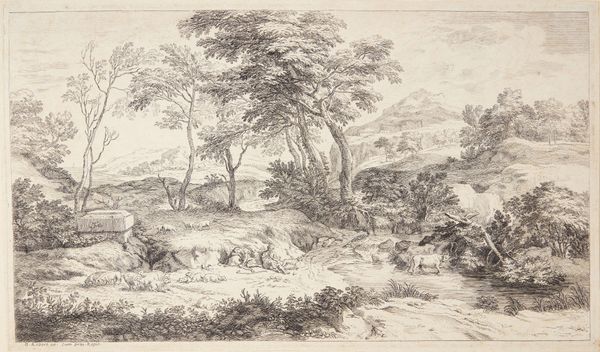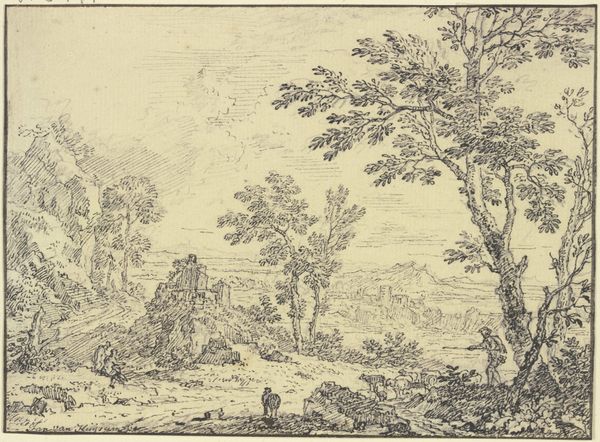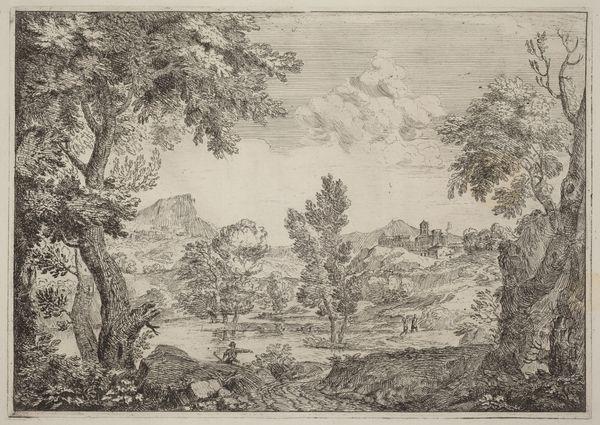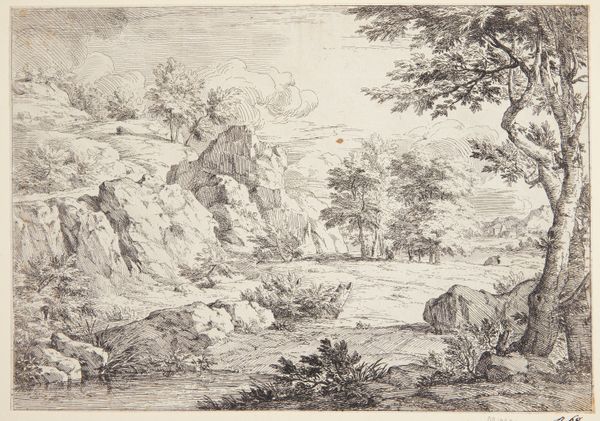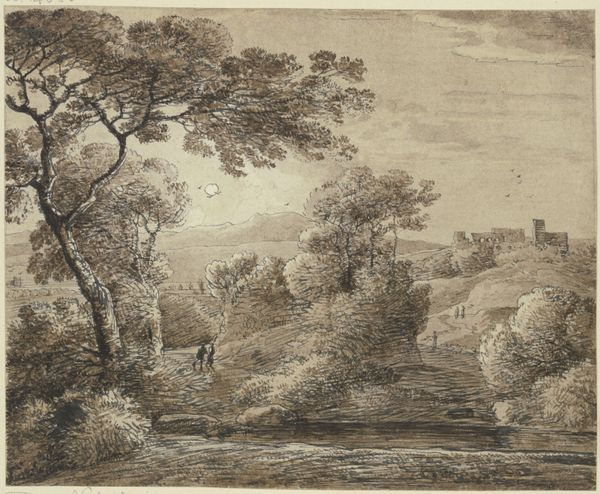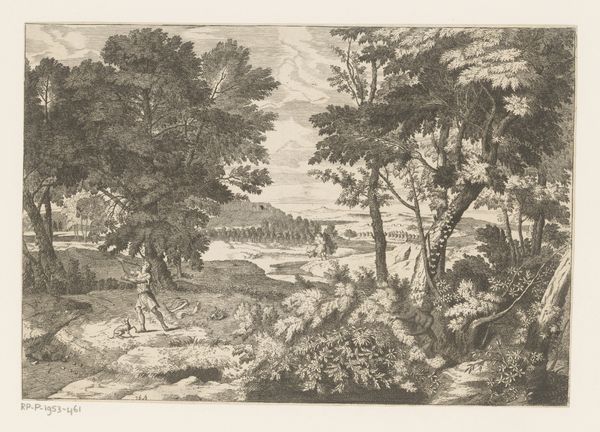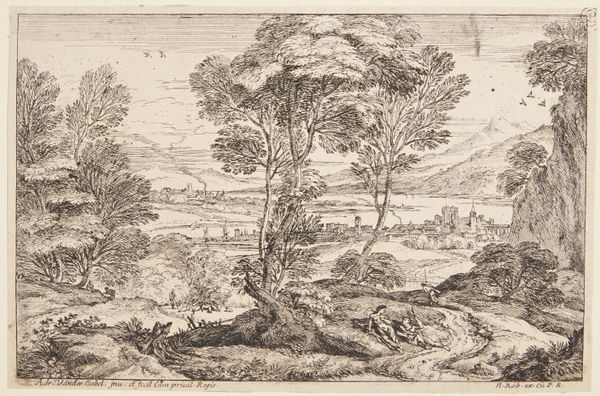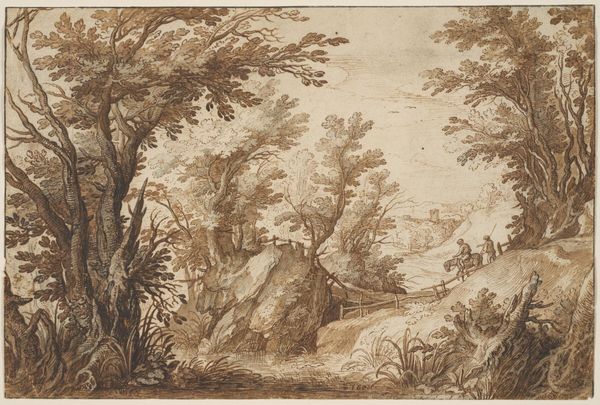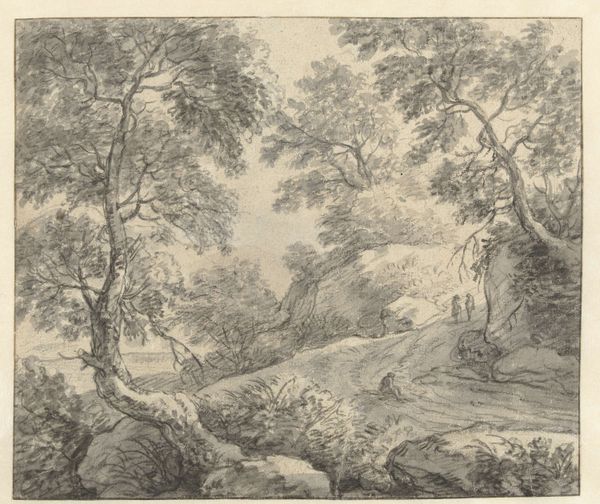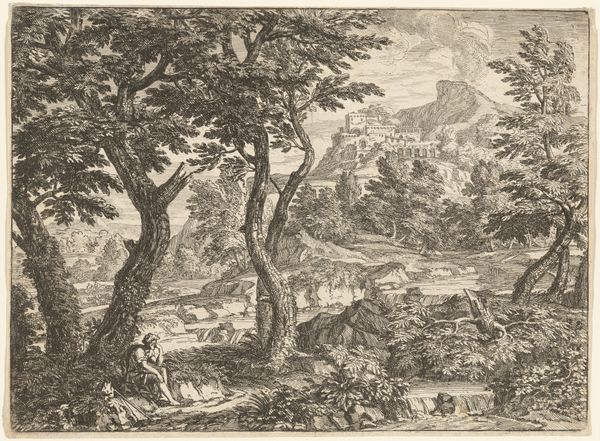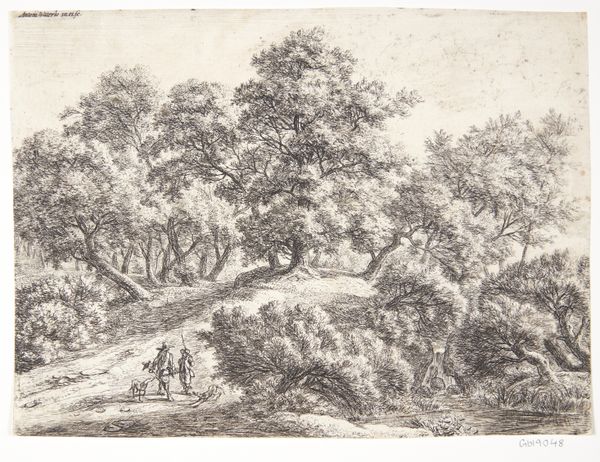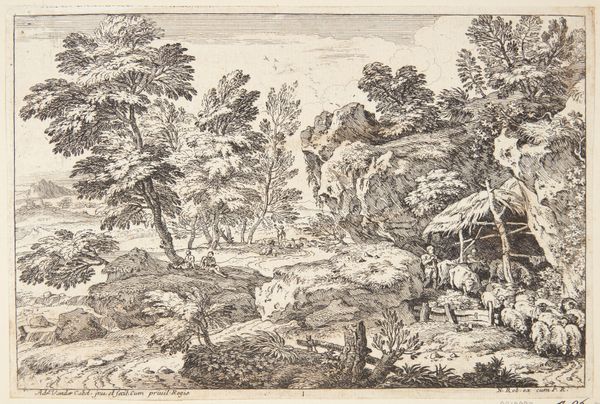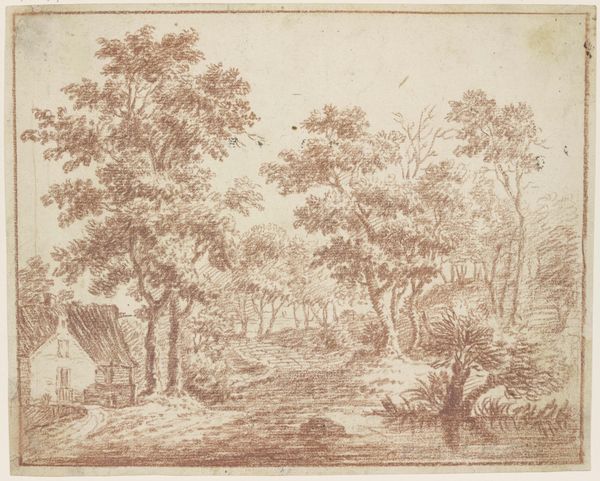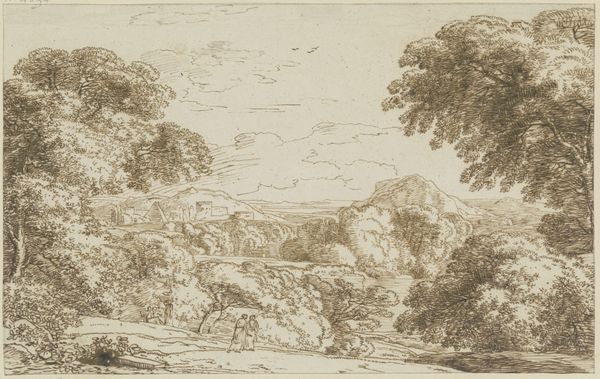
print, etching
#
baroque
#
dutch-golden-age
# print
#
etching
#
landscape
Dimensions: 250 mm (height) x 428 mm (width) (bladmaal)
Editor: Here we have Adriaen van der Kabel’s "Fløjtespillende hyrde med får", which translates to "Shepherd Playing Flute with Sheep." It's an etching, placing it sometime between 1630 and 1705. The fine lines give the landscape a peaceful, pastoral feeling. What strikes you most about this print? Curator: What immediately grabs my attention is the materiality of the etching itself. Think about the labour involved. Each line is a deliberate mark, meticulously carved into the metal plate. The entire composition is the product of skilled artisanship, mediating an idealised vision of pastoral life. It invites us to consider the role of printmaking within the Dutch Golden Age – a crucial technology for disseminating images and shaping cultural values. What does the landscape suggest about the contemporary socio-economic values? Editor: It feels very staged, somehow, idyllic. The sheep are so neatly arranged. It does prompt questions around labor, the realities of agricultural life versus the fantasy of it. Curator: Precisely. Look closer at the contrast. On one hand, the "high art" depiction of landscape. On the other, the very "low art" process of reproduction, a democratic process. In what way does the art highlight the artist's craftsmanship through the technique? Editor: The etching is amazing for the range of tones and details achieved, especially given the limitations. And to create depth with just lines! Curator: Absolutely. The lines themselves become the subject. How this translated into affordability also influenced what art was accessible, democratising art consumption for the rising middle class. A narrative on production, class, labour, consumption and technique becomes more compelling than that of idyllic shepherds! What's your key takeaway then? Editor: Thinking about this work materially reframes my perspective. I see past the pastoral fantasy and appreciate the printmaking process as a commentary on class, accessibility, and labor during the Dutch Golden Age. Curator: Indeed. It becomes a powerful intersection where process, material, and socio-economic context collide.
Comments
No comments
Be the first to comment and join the conversation on the ultimate creative platform.
